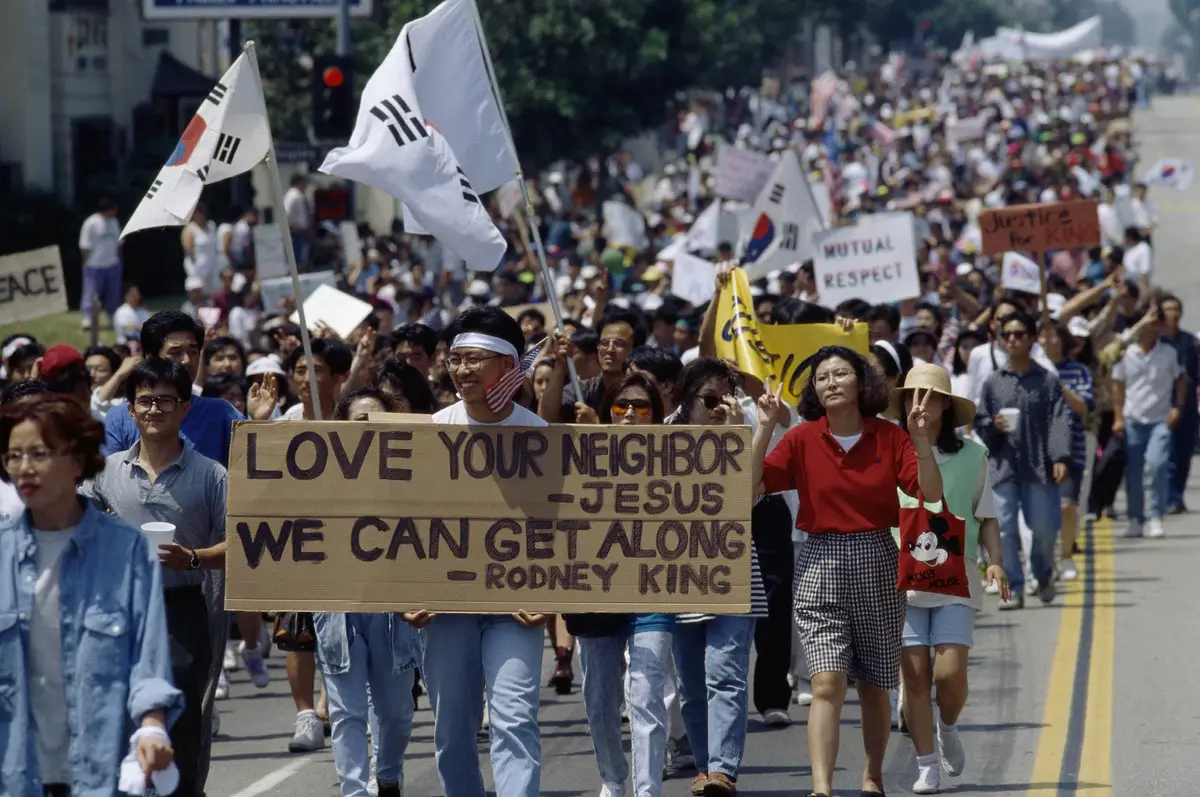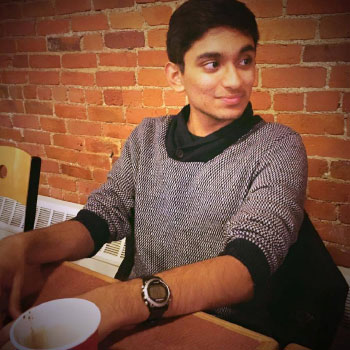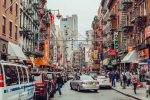Akai Gurley was unarmed when a New York Police Department officer shot and killed him three years ago. To many, Gurley’s death would be another in a slew of killings of unarmed African-American men in which the police are let off scotch-free. However, Gurley’s case did see an indictment: that of Peter Liang, the officer who fatally shot him.
What was an unprecedented step forward in ensuring justice for those whose life was unfairly taken by cops, though, was marred by Asian American groups protesting Liang’s indictment. “No Selective Justice” and “No Scapegoating” were two of the slogans they used to express their anger over Liang’s arraignment, but it was the slogan “One Tragedy, Two Victims” that caused the most fuss.
[su_youtube url=”https://www.youtube.com/watch?v=GHVddBKsCKk”]
Why was it that Asian Americans considered themselves among the victims of this attack when only one person died? Why was it that Asian American groups became politically active only after a member of their community was convicted in the killing of an African American man and never protesting when black men were perishing at the hands of police on a painfully regular basis? The questions bring to the fore the racial tensions that exist between the Asian and African American communities and the anti-blackness that afflicts many Asians across the country.
Asian and African Americans actually enjoy a long and complex history of interaction, but as race in America is commonly understood as a black-and-white issue, race relations between non-white communities in the United States is a topic often left to the wayside. Asian and African Americans, of course, have very different histories: most of the nation’s African Americans were brought over as slaves, while most Asian Americans immigrated in large numbers around 1965 after Congress decided to lift immigration quotas (though Asian immigration to the Americas had begun long before then, starting in the mid-nineteenth century).
Much of the racial tension between black and Asian populations is founded on the aggressive promulgation of the model minority myth, which deems Asian Americans as a sort of a wunderkind race. Asian Americans, the myth contended, came from a culture that inherently promotes excellence, allowing them to program computers, become doctors and attend college, all the while experiencing low levels of crime and achieving high levels of socioeconomic success. Being a model minority also meant being apolitical—Asian Americans wouldn’t make any trouble. They’d just put their heads down and study.
Cultural and political commentators often invoked the model minority myth to excoriate African Americans, reasoning that if Asian Americans could clear the highest levels of excellence, what was stopping black people for doing the same? The model minority myth, like all myths, glosses over several important facts. Most of the Asians who immigrated after 1965 came from highly educated and highly privileged echelons of their country of origin; in most cases, they were coming to the U.S. to pursue advanced degrees.
Whatever “culture of excellence” arose in Asian American communities is due to the excellence of immigrant forefathers and foremothers—a doctor, what with their access to money and resources, will of course provide their children with the best education. A working class single parent who has to work three jobs to pay the bills, on the other hand, will try their best to provide the highest quality education for their children, but a number of other completely uncontrollable factors might preclude them from an education a doctor’s child would receive.
Unfortunately, many Asian Americans have subscribed to the ideology of the model minority and sometimes position themselves against black Americans. When it comes to friendships and romantic relationships, it’s not uncommon to hear the injunction “as long as they’re not black” (media portrayals of African Americans as criminals and thugs no doubt color their prejudice). While such comments, though painfully racist, seem otherwise innocuous, anti-black racism can have fatal consequences, as was the case in the death of fifteen-year-old Latasha Harlins, who was shot and killed by Korean shop owner Soon Ja Du a year before the infamous 1992 Los Angeles riots.
[su_youtube url=”https://www.youtube.com/watch?v=8Dvwn4aXE8s”]
Du believed Harlins had stolen a bottle of orange juice and, after grabbing her by her sweater and throwing her to the ground, pulled out a gun and ended her life (investigators found the two dollars for the bottle of juice in Harlins’ pocket later on). The incident further soured the already troubled relationship between Korean Americans and African Americans who were resentful of Korean merchants dominating the business scene in predominantly black areas of Los Angeles.
Earlier this year, another Korean shopkeeper assaulted a black woman for allegedly shoplifting makeup, hitting her, kicking her and putting her in a headlock. It should be said that East Asians aren’t the only ones who enact violence on black bodies: in 2016, an Indian mob in Bangalore sexually assaulted a Tanzanian student, “after a Sudanese student’s car ran over a local woman and killed a local woman.” Though the incident did not occur in an American context, it touches on the global dimension of anti-black racism. Asians and Asian Americans have a history of complicity in the oppression of black bodies, long before Peter Liang showed up.
None of this is to say Asian and African Americans haven’t also had moments of solidarity. Yuri Kochiyama was a Japanese American activist who fought for civil rights and equality alongside Malcolm X and, today, student organizations on college campuses across the country have started Black-Asian coalitions to promote cross-cultural understanding and unity between the two communities.
Asian Americans can’t just show up to protest for civil rights when it suits their needs—if they wish to secure political and racial equality, they have to show up for all sorts of people, whether they be black, Native or Latinx. And, if they want to become better allies, Asian Americans must realize their role in oppression and racism as well. While Asian Americans have their own unique set of struggles with race, racism and injustice in the U.S., it is deluded to think that, in cases such as the ones detailed above, Asian Americans should count themselves among the persecuted. In those tragedies, there is only one victim.

















